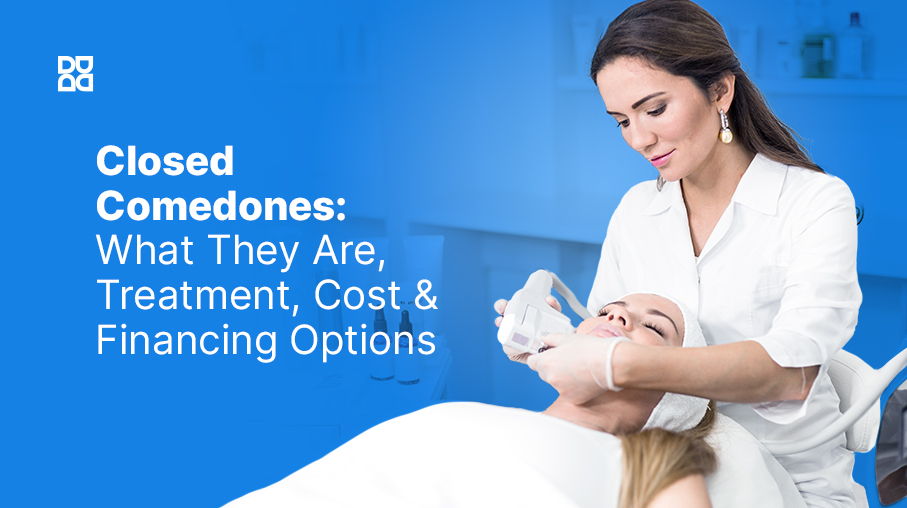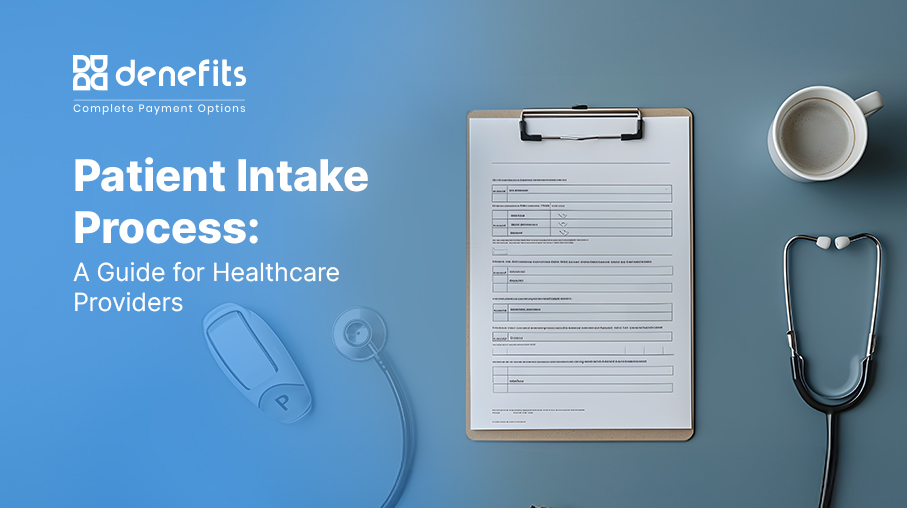
Ever wondered what those small, stubborn bumps on your face are? You might not hear the word "comedone" often, but chances are you've faced them before. They’re those annoying little blackheads or whiteheads that seem to pop up out of nowhere. Comedonal acne shows up in two forms: open and closed. And if you’ve noticed tiny, painless bumps on your chin, nose, or forehead, you're already familiar with them!
But how do these comedones form? Let’s dive into what’s happening under your skin.
What Is a Closed Comedone?
A closed comedone or a whitehead is painless and caused by clogged skin pores. Unlike acne, they aren’t red or inflamed. It usually appears on the face, chest, and back where the sebum production is more.
What Causes Closed Comedones?
In both men and women, hormonal changes play a big role. In women, things like periods, pregnancy, or menopause can bring on these breakouts. In men, higher testosterone levels, especially during puberty, can cause the skin to produce more oil, leading to clogged pores. Other reasons include:
► Applying harsh skincare products
► Using harsh soaps and oily hair gels
► Applying too much moisturizer
► Consuming a lot of sugary and fatty foods
► Smoking
Types of Comedone
Here’s a simple breakdown of the different types of comedones and how they show up on your skin.
| Type of Comedone | Description |
| Open Comedones (Blackheads) | They are black spots that appear when pores are clogged with oil and dead skin. The top stays open, which is why they look black. |
| Closed Comedones (Whiteheads) | Small white bumps form when the pore is clogged but stays closed, trapping oil and bacteria under the skin. |
| Microcomedones | Tiny clogged pores that aren’t visible but can eventually develop into blackheads or whiteheads. |
| Giant Comedones | Large, cyst-like comedones form deep under the skin, often requiring medical treatment. |
| Solar Comedones | Caused by long-term sun exposure, these comedones typically show on the cheeks and around the eyes in older adults. |
How to Get Rid of Closed Comedones Fast: Top Solutions That Work
Closed comedones can be frustrating, but some lesser-known home remedies can help clear them up. Instead of relying solely on store-bought products, you can try these simple, natural treatments that are easy to do at home.
► Clay Masks: Use a kaolin clay mask weekly to remove dirt and oil from your pores. This helps prevent new comedones from forming.
► Apple Cider Vinegar Spot Treatment: Mix apple cider vinegar with water and gently apply it with a cotton ball to your skin. It helps balance your skin and fights bacteria, which may reduce comedones.
► Steam Your Face: Steaming helps open the pores and loosen the dirt and oil stuck inside. After steaming, gently wipe your face with a clean cloth. This makes it easier to clear your skin.
► Green Tea Toner: Brew some green tea, let it cool, and apply it to your skin with a cotton pad. Green tea helps minimize oil production and calms irritated skin because of its antioxidant properties.
► Ice Cubes: Rubbing an ice cube over closed comedones is a quick and easy way to soothe irritation and reduce swelling.
► Honey and Cinnamon Mask: Mix honey with cinnamon and apply it to your face for 10-15 minutes. Both have natural ingredients that fight bacteria and reduce acne. Wash it off with warm water to prevent comedones from forming.
► Aloe Vera Gel: Apply fresh aloe vera gel to reduce irritation and calm breakouts. Aloe vera’s healing properties can help stop closed comedones from getting worse.
► Tea Tree Oil: Mix tea tree oil with coconut oil and apply it to your skin. This oil is great for fighting bacteria and can help clear up comedones.
Hormonal Acne vs Fungal Acne vs Closed Comedones: Key Differences and Treatments
Acne comes in various forms, each with its own causes and characteristics. Among the most common types are fungal acne, closed comedones, and hormonal acne. Understanding the differences between these conditions can help you identify what’s affecting your skin and how to treat it effectively. In this guide, we’ll break down each type of acne, exploring their causes, how they look, and the best treatment options to keep your skin clear and healthy.
| Fungal Acne | Closed Comedones | Hormonal Acne | |
| Description | An overgrowth of yeast on the skin leads to acne-like bumps. | Also known as whiteheads; formed when pores are clogged with oil and dead skin. | Acne linked to hormonal changes in the body, often during puberty or menstrual cycles. |
| Causes | Triggered by warm, humid conditions, sweat. | Poor skincare habits, excess oil production, and heavy makeup. | Fluctuations in hormones, particularly androgens, increasing oil production. |
| Areas Affected | Typically appears on the chest, back, and sometimes the face. | Commonly found on the forehead, chin, and nose (T-zone). | Commonly found on the jawline, chin, and cheeks. |
| Appearance | Small, itchy bumps that often cluster together. | Small and white bumps on the skin's surface. | Red, swollen bumps that may be deeper than other types of acne. |
| Treatment | Antifungal creams, lightweight skincare, and keeping the skin dry. | Gentle cleansing, regular exfoliation, and topical treatments with salicylic acid or benzoyl peroxide. | Hormonal treatments (like birth control), topical treatments, and a consistent skincare routine. |
| 5 Tips and Tricks to Treat Closed Comedones on Your Forehead: 1. Gentle Cleansing is Key: Use a mild cleanser to eliminate excess oil and impurities. Look for products that say "non-comedogenic," which means they won’t clog your pores. 2. Choose the Right Moisturizer: Moisturizing is essential, even if you have oily skin. Choose lightweight, oil-free moisturizers to keep your skin hydrated without adding extra grease. Ingredients like hyaluronic acid or glycerin are great options. 3. Make Exfoliation Part of Your Routine: Exfoliating helps remove dead skin cells that can block your pores. Use a mild exfoliant that contains alpha hydroxy acids (AHAs) or beta hydroxy acids (BHAs). 4. Hydrate and Nourish Your Body: Drinking plenty of water and eating a balanced diet can benefit your skin. Foods rich in vitamins and antioxidants help keep your skin healthy and can reduce breakouts. 5. Sunscreen is a Must: Always apply sunscreen before going outside, as sun exposure can make acne worse. Apply a non-comedogenic sunscreen to safeguard your skin without blocking your pores. |
Effective Closed Comedones Treatment: Costs and What to Expect
Clay masks, steam, and other simple home remedies can do a great job of clearing comedones by pulling out dirt and unclogging your pores. But if you’re dealing with more stubborn comedones that just won’t go away, it might be worth considering professional treatments like medical facials or chemical peels. These options go deeper than home remedies, providing stronger exfoliation and focused care to get rid of tough blockages and help your skin look clearer and healthier.
| Treatment | Description | Estimated Cost |
| Medication | Prescription medications like antibiotics or retinoids help reduce acne and prevent breakouts. | $1,500 (for 1 year) |
| Medical Facial | A professional facial specifically designed to treat acne, including deep cleansing and exfoliation. | $900 (for 1 year) |
| LED Light Therapy | Uses different wavelengths of light to kill bacteria and reduce inflammation for clearer skin. | $100 - $1,500 |
| Chemical Peel | Involves applying a chemical solution to exfoliate the top layers of skin, unclogging pores and improving texture. | $500 - $2,200 |
| Acne Extraction Treatment | A professional treatment where a licensed esthetician safely removes blackheads and whiteheads. | $200 - $2,000 (for 1 year) | Laser Therapy | Uses focused light to target acne-causing bacteria and reduce inflammation, also minimizing scars. | $3,000 - $4,000 |
Phase-Wise Cost of Closed Comedone Treatment
Below is a list of common procedures used during closed comedone treatment and a brief explanation.
| Procedure | Description |
| Deep Cleansing | Gentle cleansing to remove oil, dirt, and makeup that could block pores. |
| Exfoliation | Using products with salicylic or glycolic acid to remove dead skin cells and unclog pores. |
| Topical Treatments | Applying creams or gels with retinoids, benzoyl peroxide, or alpha hydroxy acids to treat comedones. |
| Moisturizing | Hydrating the skin with a lightweight, oil-free moisturizer to maintain skin balance. |
Denefits Financing for Closed Comedone Treatment
Treating closed comedones can be a lengthy and costly process, especially when opting for advanced procedures like chemical peels, medical facials, or professional extractions. Denefits offers flexible payment plans that allow individuals to receive the skincare treatments they need without the burden of upfront costs.
Whether you’re seeking regular facials, laser treatments, or dermatologist visits, Denefits helps ensure that cost is never a barrier to clearer, healthier skin. Plus, its no-credit-check policy and high approval rate mean almost everyone can qualify for financing, ensuring you get access to the treatments you deserve.
Conclusion
Closed comedones can be a frustrating skincare challenge, but achieving clearer skin is possible with the right treatment. Whether you start with home remedies or opt for professional treatments, understanding your options is key to effectively managing acne. Additionally, with Denefits, financial barriers can be eased, allowing you to pursue the skincare solutions you need without the burden of upfront costs. Their flexible financing plans make high-quality treatments accessible for everyone, helping you focus on your journey to healthier, radiant skin.



